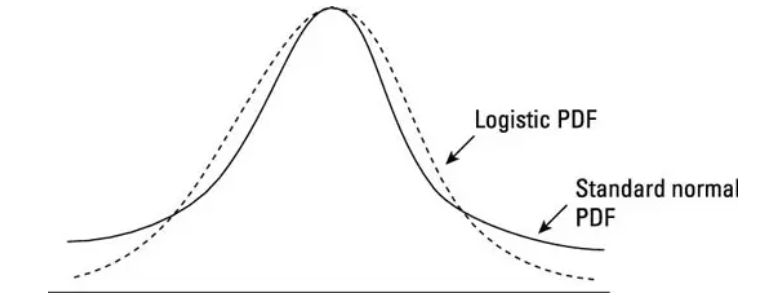Discrete Choice Model
- Decisioners, Alternatives, and their attributes
- Differnt alternatives provide different utility level, measuring the satisfaction
- $P_{i,j} = f(X_i, X_j)$
- Rules: Maximized utility
- If $U_{in}>U_{jn}$, then $n$ choose $i$, in other words, $P_n(i) = P(U_{in}>U_{jn})$
- Thus, a choice issue is translated into a probability estimation. The utility is a random term, determining by deterministic component and random component
- $U_{in} = V_{in} + \epsilon_{in}$, where $V_{in} = \beta_1 X_{in1}+…+\beta_n X_{inn} = \beta’ X_{in}$
- $U_{jn} = V_{jn} + \epsilon_{jn}$, where $V_{jn} = \beta_1 X_{jn1}+…+\beta_n X_{jnn} = \beta’ X_{jn}$
- ** The factor affecting the probability & utility is the relative differences**
Bionomial logit model
logit model
- Dependent variable only includes two value.
- A very important feature of Logit is that there is no upper or lower limit.
-
Need a probability model
- Consider the probability of choose 1 ($\pi_i$), random variable $Y_i$ follow a $(0-1)$ distribution of $\pi_i$
- $P_{Y_i = y_i} = \pi_i^{y_i}(1-\pi_i)^{1-y_i}$, $y_i = 0,1$
- The expectation and variance are respectively:
- $E(Y_i) = \pi_i$
- $Var(Y_i) = \pi_i (1-\pi)$
- Define odd ratio:
- $\Omega_i = \frac{\pi_i}{1-\pi_i}$
- $logit (\Omega_i) = ln(\Omega_i) = ln (\frac{\pi_i}{1-\pi_i})$
- If we assume $\pi_i$ follows the linear model:
- $logit (\Omega_i) = ln (\frac{\pi_i}{1-\pi_i}) = x_i’ \beta$
- The probability can be estimated from the antlogit:
- $\pi_i (x_i) = \frac{exp(x_i’ \beta)}{1+exp(x_i’ \beta)}$
- and, $y_i = \pi(xi) + \epsilon_i$
- $\beta_i$ measures when change in $x_j$ unit, $ln(\Omega_j)$ change $\beta_j$ unit,
- It’s too difficult to display the economic content of the coefficient
- So we calculate odd ratio:
- $\Omega_i = exp(x_i’\beta)$
- $\Omega_i(x_i, x_{ij}+1) = exp(x_i’\beta) exp(\beta_j)$
- $\frac{\Omega(x, x_j+1)}{x, x_j} = exp(\beta_j)$
- $\beta_j$ measures when change in $x_j$ unit, the odds of winning are $exp(\beta_j)$ times the original, Given all other variables remain unchanged / Given all else equal
- Besides, we usually use average marginal effect:
- When $x$ increases by 1 unit, the probability that the $Y$ changes by $\beta$%, Given all other variables remain unchanged / Given all else equal
- P –> Odds –> Logit is the logit transformation
- The logarithm of Odds is called Logit
Test
- $\chi^2$: Chi-square test (less than 0.05)
- $F$: With confidence interval, we can calcualte significant
- $Wald, Likelihood ratio test, Score test$: Whether the fitted model is significantly different from the model containing only constant terms.
- $AIC, SC, -2 log L$: Akaike information criterion (smallest), For comparison between models
- $BIC$: bayesian information criterion (smallest)
- Type 3 test: Test whether each variable in the model is significant
Notes
- When we assume $\epsilon$ is follow a normal distribution, this is a probit model (No closed solution)
- Utility of the variables is considered as a latent variable
- When we assume logistic distribution, this is a logit model
- When we assume gumble distribution, a binomial logit model can be obtained, with the advantages of provbit and logit model

